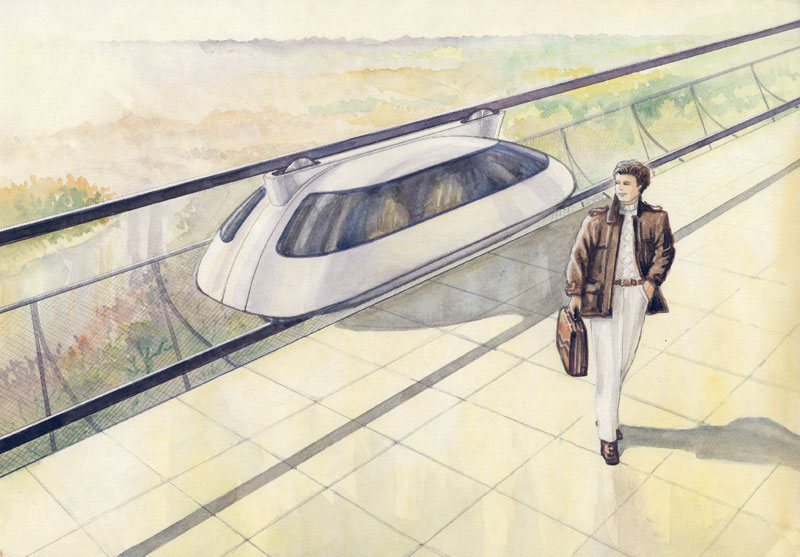
Unitsky String Technologies


 |
Unitsky String Technologies |


|
Site news
|
24 November 1989 |
|
Arrangement of traffic on STS route How is it possible to get off the track, if its height is, say, 50 m? It will be much easier and safer than to leave a plane flying at an altitude of 10 thousand meters, because the plane cannot disembark passengers between airports. In STS, a passenger can get off not only at the terminal or a station, but also at the interval, at any anchor support, i.e. on the average in every 1,000 m. When boarding a passenger will give a command to the computer (with voice or by typing the numeric code of the disembarkation place) at final destination. If he chose to exit on a 50-meter high support somewhere in the forest, because there is a mushroom place there, he would have to descend on a convenient staircase located in the support body (if this place is often visited, the support can be equipped with an elevator or escalator). Having left the vehicle, the passenger lets it go prior instructing the computer at what time he would like (and where he would like) to depart from this place. You may be sure that the ordered vehicle will be waiting for you on the track at the appointed time. The computer will not forget about the request. Landing (disembarkation) of passengers at terminals and stations will be much easier. Your vehicle will enter the terminal building where you can safely (as in modern bus terminals) board the carriage (or get out of it). The height of the route would not make any difference here, because it will pass away from the station, maybe even a few miles away. High-speed entrance to the route (exit from it) will require accelerating (braking) segments with a length of over 1,000 m, therefore the turnout switches will be located a few kilometers away from the station. The passenger will arrive at it not through the main route, but along the branch from it, which, if necessary, will enter the terminal building not at a height, but at the ground level. 
|
|
© 1977—2018 Anatoly Yunitskiy. All Rights Reserved. |
||